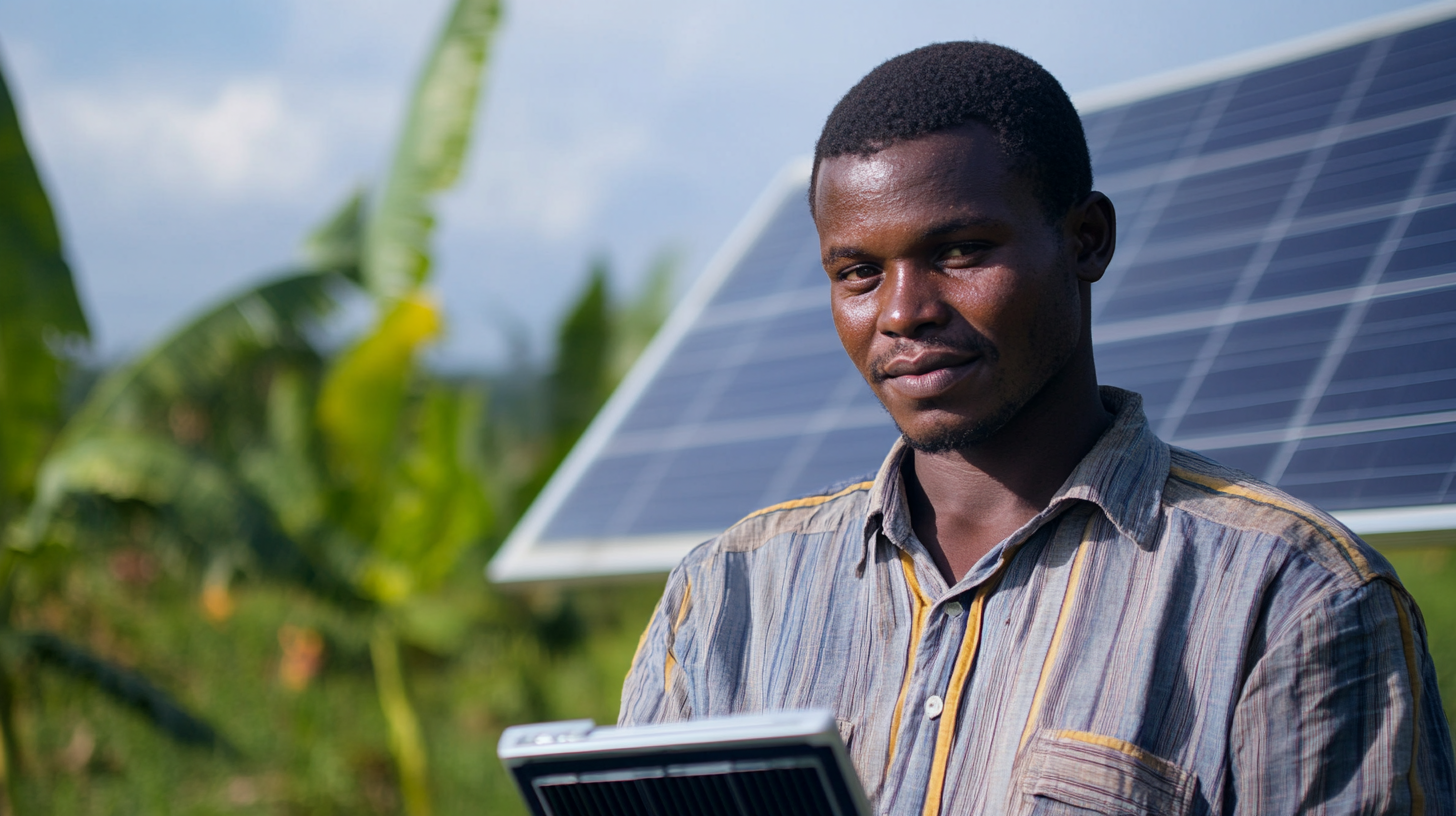Unlock the Potential of Solar With Light Innovations for Sustainable Global Sourcing
As the global demand for sustainable energy solutions continues to surge, the integration of innovative technologies into solar energy systems is becoming increasingly essential. According to the International Energy Agency (IEA), solar power capacity has experienced remarkable growth, with annual installations surpassing 200 gigawatts globally in 2020, and this trend is set to continue. Innovations in light utilization not only enhance energy efficiency but also drive down costs, making solar more accessible than ever. The concept of "Solar With Light" embodies the potential for harnessing the power of sunlight through cutting-edge technologies, paving the way for a more sustainable future.
Moreover, a recent report by the International Renewable Energy Agency (IRENA) highlights that solar energy could account for over 25% of global electricity generation by 2050. Such projections underscore the necessity of advancing solar technologies, particularly those that optimize light absorption and conversion processes. By unlocking the full potential of solar energy through innovative light applications, we can not only meet the increasing energy demands but also contribute significantly to reducing carbon footprints worldwide, fostering a greener planet for generations to come.

Exploring the Intersection of Solar Technology and Light Innovations
The intersection of solar technology and light innovations presents a transformative opportunity for sustainable global sourcing. As we look to the future, advancements in solar-powered solutions are becoming essential to addressing global energy demands while mitigating climate change. Insights from recent reports highlight a growing trend in the integration of solar capabilities with innovative technologies such as Internet of Things (IoT) devices, which enhance energy efficiency and operational effectiveness across various industries. In particular, the implementation of solar-powered LED systems reflects a significant leap in energy-efficient lighting. These systems not only reduce energy consumption significantly but also contribute to lower carbon emissions. Studies reveal that the global LED market is expected to grow at a CAGR of 16% from 2020 to 2025, driven by the demand for sustainable and energy-efficient solutions. This innovation paves the way for smarter urban planning, providing eco-friendly lighting in public spaces while reducing cities' environmental footprints. Furthermore, as healthcare systems worldwide increasingly rely on technology, solar-powered solutions can deliver substantial health equity benefits. For example, rural healthcare facilities can leverage solar energy to power essential medical equipment, thus expanding access to diagnostics and treatment. A report on technological advancements for health equity indicates that innovations in renewable energy are crucial for addressing disparities in healthcare access across different regions, highlighting the vital need for investment in sustainable infrastructure that can adapt to local contexts. Embracing these light innovations in conjunction with solar technology not only strengthens global sourcing strategies but also positions businesses as leaders in a more sustainable and responsible future. With an estimated 30% of energy consumption attributed to lighting globally, the shift toward solar-powered systems is both an immediate necessity and an investment in long-term environmental resilience.

Harnessing Light Innovations for Enhanced Solar Efficiency
In the quest for sustainable energy solutions, solar power stands out as a frontrunner. However, its true potential hinges on continuous innovations in light technology that can significantly enhance solar efficiency. By harnessing advancements such as bifacial solar panels, which capture sunlight from both sides, and transparent solar cells that integrate into windows, we can unlock new avenues for solar energy utilization. These innovations not only optimize energy capture but also expand the versatility of solar applications in urban environments.
Moreover, innovations like concentrated solar power (CSP) systems leverage mirrors or lenses to focus sunlight, dramatically increasing energy output. These systems can efficiently provide power even during non-sunny hours, making renewable energy more reliable and accessible. Coupled with energy storage solutions, these technologies are paving the way for a future where solar energy can meet the demands of modern society without compromising sustainability.
Investments in research and development to create smarter solar materials and systems represent a crucial step towards harnessing light innovations for enhanced solar efficiency. As we continue to refine these technologies, the global push for renewable energy will not only contribute to a cleaner environment but also propel economies toward sustainable growth, making solar energy a vital player in the shift to a low-carbon future.

Sustainable Global Sourcing: Strategies for Solar Solutions
As the world increasingly embraces renewable energy, solar solutions emerge as a cornerstone for sustainable global sourcing. One of the key strategies is to invest in innovative technologies that enhance the efficiency and productivity of solar systems. These advancements not only lower the cost of solar energy production but also extend the viable life span of solar panels, making them even more appealing for widespread adoption. Collaborating with cutting-edge manufacturers and research institutions can lead to breakthroughs in solar technology, ensuring that resources are used sustainably while maximizing energy output.
Equally important is the approach to sourcing materials for solar solutions. A responsible sourcing strategy prioritizes ethical and environmentally friendly practices. This involves establishing partnerships with suppliers who adhere to standards that promote sustainability, such as transparent supply chains and minimal environmental impact. By emphasizing the use of recycled or responsibly mined materials, companies can ensure that their solar products contribute positively to the planet while minimizing their carbon footprint.
Furthermore, companies should consider regional sourcing to reduce transportation emissions and enhance the resilience of their supply chains. Tapping into local markets not only supports community economies but also encourages innovation in solar technologies tailored to specific environmental conditions. By embracing these strategies, organizations can effectively unlock the potential of solar energy, leading to a more sustainable future globally.

The Role of Innovative Lighting in Renewable Energy Development
Innovative lighting technologies play a pivotal role in advancing renewable energy development, particularly in the realm of solar energy. As the world seeks to transition to sustainable energy sources, integrating cutting-edge lighting solutions can enhance the efficiency of solar power systems. For instance, advancements in LED technology not only reduce energy consumption but also improve the illumination of solar panels, thereby maximizing their output. Such innovations help in creating a more sustainable future by directly affecting how we harness and utilize solar energy.
Moreover, the incorporation of smart lighting systems can further accelerate the growth of renewable energy. These systems can be programmed to adapt their brightness based on natural light availability, thereby reducing unnecessary energy usage. Additionally, integrating sensors and IoT technology within lighting solutions allows for real-time monitoring and adjustments, ensuring optimal performance. This synergy between lighting innovations and solar energy not only boosts energy efficiency but also encourages the adoption of renewable resources in urban planning and infrastructure development.
In essence, the role of innovative lighting in renewable energy development extends beyond mere illumination. It embodies a transformative approach to enhancing energy utilization, setting the stage for a more sustainable global ecosystem. By unlocking the potential of solar energy through smarter lighting solutions, we can pave the way for a cleaner, greener future.
Future Trends: Merging Solar Power with Cutting-Edge Light Technologies
The future of solar energy is undeniably bright, especially as we witness a remarkable convergence of solar power with cutting-edge light technologies. According to recent industry reports, the solar energy market is projected to reach a value of over $223 billion by 2026, driven by increasing demand for renewable energy and advancements in photovoltaic (PV) technologies. One of the critical trends transforming this landscape is the integration of artificial intelligence (AI) and data analytics, which enhances energy management and optimizes solar power generation.
Innovations in light technologies, such as smart lighting systems and IoT applications, are also set to play a pivotal role. The global smart lighting market is expected to grow at a CAGR of 24% by 2025, and this growth will significantly complement solar energy solutions. The combination of solar PV systems with smart lighting not only improves energy efficiency but also contributes to sustainable urban development by reducing carbon footprints.
As leaders in the solar sector convene for major conferences, such as the recent Global Partner Conference, the emphasis is on collective action and innovation. Such platforms encourage collaboration among industry stakeholders, fostering the exchange of ideas and strategies that are essential for driving the solar industry forward. With technological advancements and strategic collaborations, the vision of a world powered significantly by solar energy is becoming a reality, reflecting the urgency of global climate action and the commitment to a sustainable future.
